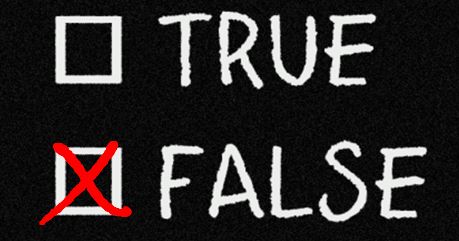I don’t know the norms of trade book publishing. When they do a paperback version, do they correct errors that were in the hardback?
Her extremely wrong description of Congress as one-third female after the 2012 election reminded me: As Hanna Rosin’s The End of Men comes out in paperback, careful readers might like to know if a few specific, unambiguous factual errors have been corrected (with sources linked for true facts).
- “Women are now lead TV anchors, Ivy League College heads, bank presidents, corporate CEOs, movie directors, scatologically savvy comedians, presidential candidates – all unthinkable even twenty years ago” (p. 198). All wrong.
- “A recent British study showed the women were three times more likely to be arrested for domestic violence, and far more likely to use a weapon” (p. 183) Yes, the study showed women were more likely to be arrested — among people who committed crimes, which women commit less! (read).
- “Auburn (Alabama) has become the region’s one economic powerhouse by turning itself into a town dominated by women” (p. 106). Auburn is not dominated by women in any demonstrable way.
- “Rates [of sexual assault] are so low in parts of the country — for white women especially — that criminologists can’t plot the numbers on a chart” (p. 19). Beside the fact that even tiny numbers can be plotted on a chart, U.S. sexual assault rates, which are declining, are not even low by rich-country standards.
- “In Asia, as women gain more economic power and retreat further from the culture’s long-standing ideal of a perfect wife, the average age of marriage for women is thirty-two” (p. 6). This is completely wrong (for “Asia” overall, and for every major country in Asia, as Mara Hvistendahl explained).
- “The recent rise in plastic surgeries is fueled by men — especially middle-aged men — who have been lining up for face-lifts, Botox, and liposuction” (p. 30). This is wrong in every possible way. According to the American Society of Plastic Surgeons, which tracks these things, cosmetic surgery (except Botox and its equivalents, which actually is not surgery) is becoming less, not more, common; both men and women had a 6% rise in facelifts from 2000 to 2012; both men and women got fewer liposuctions in 2000 than 2011 (-56% for men, -41% for women) men get a small percentage of actual cosmetic surgery (13%) and an even smaller percentage of Botox (6%); the rate of increase in Botox procedures from 2000 to 2012 is lower for men (314%) than for women (729%); and the decrease in overall actual surgeries is greater over that time for men (-48%) than for women (-11%). Whew, that’s a big ball of wrong.
- “Nearly a third of Brazilian women now make more money than their husbands” (p. 151). The number, according to her source, is 28% (their “more than a quarter” is Rosin’s “almost a third”), and it applies only to “highly-qualified Brazilian women working full-time.”
Why do I care about these minute details, instead of focusing on the major problem, her false assertion that the “middle class … is slowly turning into a matriarchy” (p. 5), a “matriarchy laying down roots” (p. 160) as women outnumber men in college. What bugs me about the constant factual errors is Rosin’s approach: She uses facts and numbers to prove what she has already decided is true, rather than using them to learn what is true. (I don’t find any errors in the book that run against her thesis.) This problem is not unique to her by any means — I see it all the time among undergraduate students and other polemicists who dig for facts backwards from their conclusions. The commonness of the problem is a good reason to belabor it, which I have done in the blog post series, but I’ve also written on the larger issues, including in this review and this longer article.


She wrote a big ball of bs on the wage gap in Slate recently, too.
LikeLike
Typically, errors noted in a book are kept in a “reprint corrections” file, and implemented in the text when there is demand for a new print run of the edition of the book. In other words, corrections can be made from one print run to the next of a single edition of a hard cover book, as well as when the edition appears in paperback.
LikeLike
I bet none of the corrections will ever appear.
LikeLike
Hannah Rosin has put this article out: http://www.slate.com/articles/double_x/doublex/2014/04/male_rape_in_america_a_new_study_reveals_that_men_are_sexually_assaulted.html 29th April 2014 //When Men Are Raped
A new study reveals that men are often the victims of sexual assault, and women are often the perpetrators.
By Hanna Rosin//
LikeLike
I’m trying to check up on this, I’m concerned about it, (how accurate) and researching, (or trying to research) Hannah Rosin’s claims led me here.
LikeLike